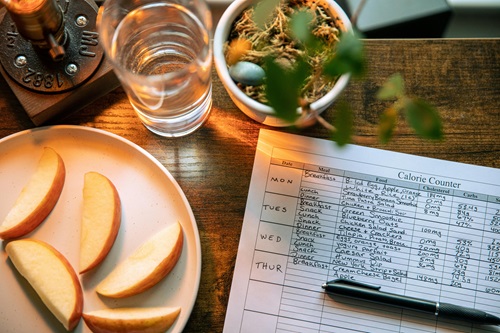Food Diaries, Part 2
Tom Horvath, PhD
 Part 1 suggested that tracking what you eat rather than what you weigh promotes better health and could also lead to slow but sustained weight loss over time. Part 2 adds further detail about what to eat. Even if there were only a minor reduction in some of the less-than-healthy foods you eat, the introduction of better foods is a significant improvement for your health. The food diary will remind you to keep it filled with good food.
Part 1 suggested that tracking what you eat rather than what you weigh promotes better health and could also lead to slow but sustained weight loss over time. Part 2 adds further detail about what to eat. Even if there were only a minor reduction in some of the less-than-healthy foods you eat, the introduction of better foods is a significant improvement for your health. The food diary will remind you to keep it filled with good food.
Part 1 emphasized consulting with your doctor if appropriate and the Mediterranean diet with its focus on fruits and vegetables. Part 2 adds eating 1) at least 30 different plant foods each week and 2) probiotic foods (not supplements). Both actions support increasing and maintaining the diversity of the gut microbiome.
What is the gut microbiome? The trillions of bacteria, viruses, fungi and other tiny creatures in our intestines that, by helping us digest our food, enhance our health. Our gut microbiome maintains its diversity when it has a variety of foods to digest. The health advantages include improved mental health, lower risk of further weight gain or metabolic syndrome, lower cardiovascular risk, improved immune function, improved digestion, and others.
A simple approach to enhancing gut microbiome diversity is to eat a variety of plant foods. These foods ideally include beans, whole grains, a wide range of vegetables and fruits, and nuts and seeds. As stated in Part 1, you could focus on adding one new food per week. Some foods are also relatively easy to add. There are many types of nuts and seeds. There are even many types of apples (which for our purposes apparently count as different foods). And it appears, pending further research, that 30+ different foods per week is sufficiently diverse to bring about the gut microbiome diversity you need.
There is also one specific category of foods that merits specific attention, probiotic foods (also called fermented foods). Examples are yogurt, miso, kimchi, sauerkraut, kombucha, pickles, kefir, and tempeh. These foods are sold from the refrigerator case, except pickles, which might also be sold from a store shelf. However, a pickle with active live cultures will be sold only from the refrigerator case. It is the active live cultures you want, because they will add to the diversity of your gut microbiome. Try these foods in small amounts at first, because some may not agree with you.
I could continue mentioning other beneficial foods, and ones to avoid, but you have more than enough to get started. With luck you will become your own active researcher (it’s hard to beat the internet for this kind of research) and the designer of your own improved eating plan. Further, as you feel better and more energetic, it is easier to stay focused on your goals with addictive behavior.
Read Part 1 of the Food Diary Series here.
